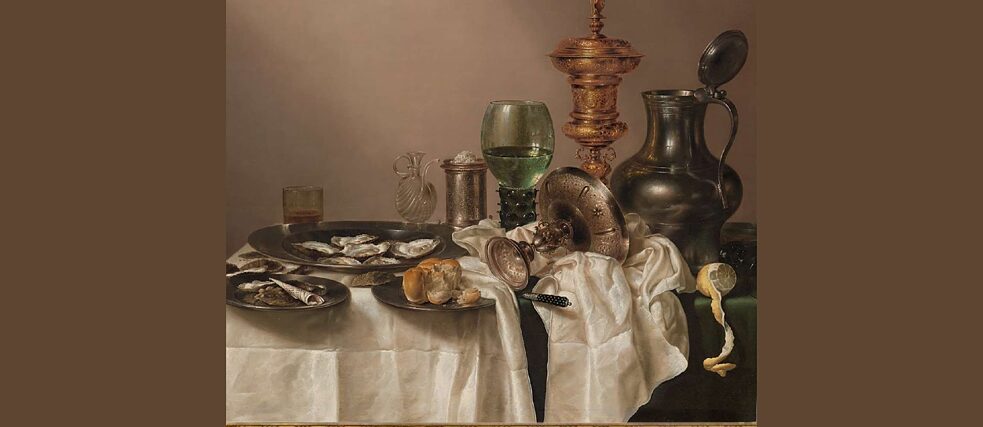The Museum of Unbelonging

Identities and practices don’t appear from the ether: they are formed over time by constant reiteration of certain thoughts and ideas. The idea of the Self emerges from its relation to the Other; in the gaps between them lies the terrain of belonging and unbelonging.
At the Rijksmuseum in Amsterdam, much before viewers stand in front of Rem- brandt's incredible The Night Watch, a painting that takes over an entire room, is a still life that hangs unobtrusively in one of the alcoves of the grand central gallery. At first glance, it may seem rather unremarkable compared to some of its esteemed neighbours but an entire world is contained in Willem Claesz Heda’s Still Life With a Gilt Cup. Painted in 1635, the table in the frame is stacked from end to end with the remnants of a somewhat lavish meal: atop a silken tablecloth there are oysters on pewter plates, some vinegar to go with them; bread; a half-peeled lemon; some salt and peppercorns; gold and silver vessels, some white wine in a Venetian glass and a half-full glass of beer.
Heda, a master realist of his time, offers a glimpse into what a certain kind of life
looked like, and once we’re done marvelling at the precision and faithfulness with which he has painted what appears to be a breakfast scene, we might wonder: do all these items belong in the first meal of the day? Well, for 17th century Holland and its Dutch East India Company, well on its way to becoming an imperial power after Great Britain and their East India Company, the world had become its oyster. And these components that formed Heda’s still life came from different corners of the globe. The lemon, although grown in orangeries owned by the rich, had made its way to the north from the Mediterranean, or even as far as Brazil; gold, silk and muslin from Bengal, India, salt and pepper from the Sumatran islands in South-East Asia – here is a painting that shows us the complicated politics of unbelonging and belonging. Advancements in science brought about colonialism, a history of violent conquests that divided the world into Us and Them, but one conveniently exploited the other and their produce to carve out cultural and socio-economic identities in their respective homelands.
Identities and practices don’t appear from the ether: they are formed over time by constant reiteration of certain thoughts and ideas. They are manifested in the notions of nationality, the rules surrounding gender; food and religion, to objects and spaces that are turned into markers of right and wrong. The idea of the Self, as we have learned, emerges from its relation to the Other; in the gaps between them lies the terrain of belonging and unbelonging. And what storytellers and those in the business of sharing stories are constantly attempting to do, is to narrow those gaps – not by erasing the differences but by acknowledging them and recognising the ways in which unbelonging occurs.
The team of narrative experts at Once Upon a Tomorrow have shared examples of unbelonging, both personal and otherwise, to talk about the kinds of practices that have become normalised over time, and offer us a ‘hack’ to combat those experiences. Will they work? Maybe and maybe not, but we will never know if we don’t try to change the status quo.